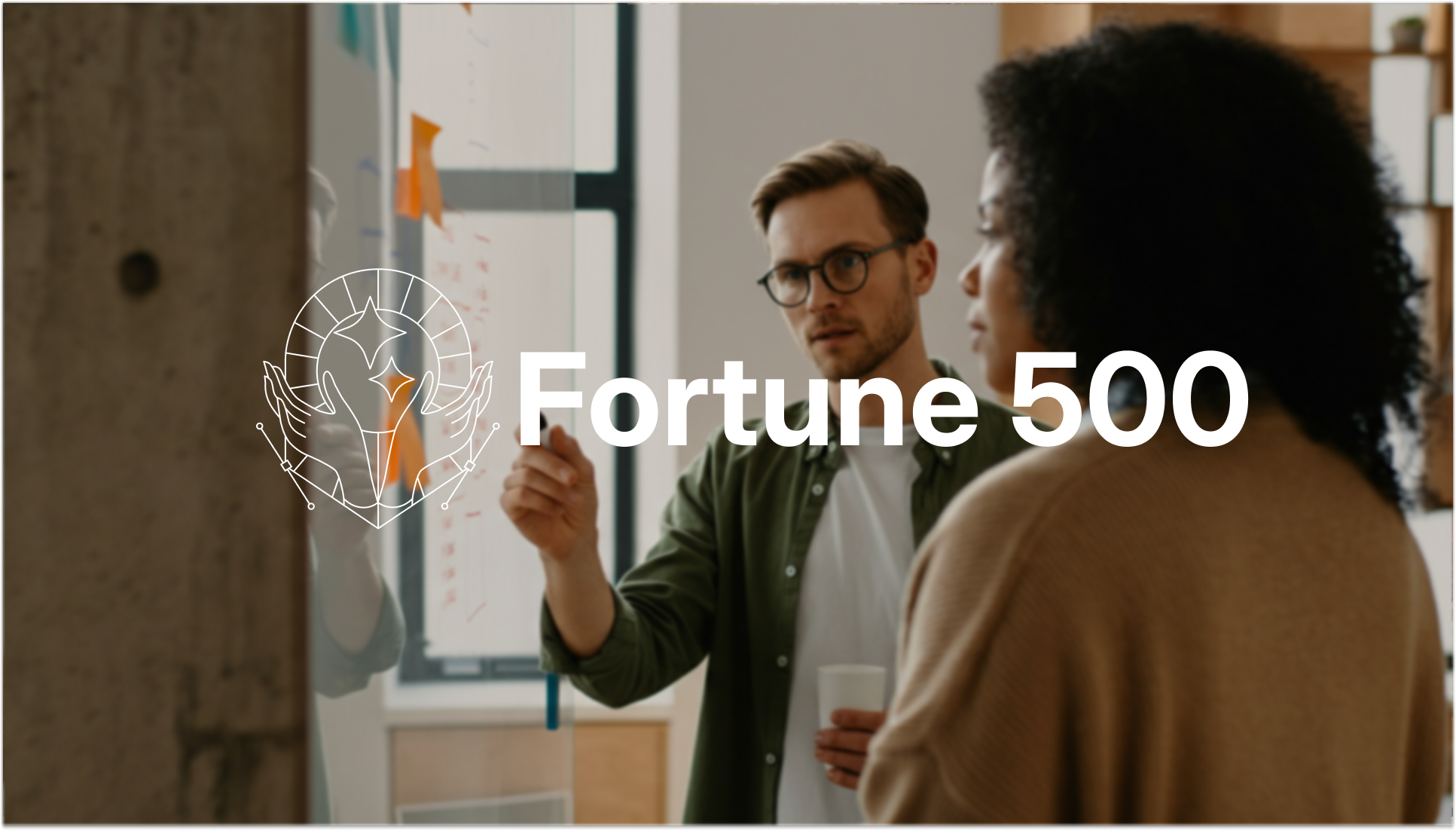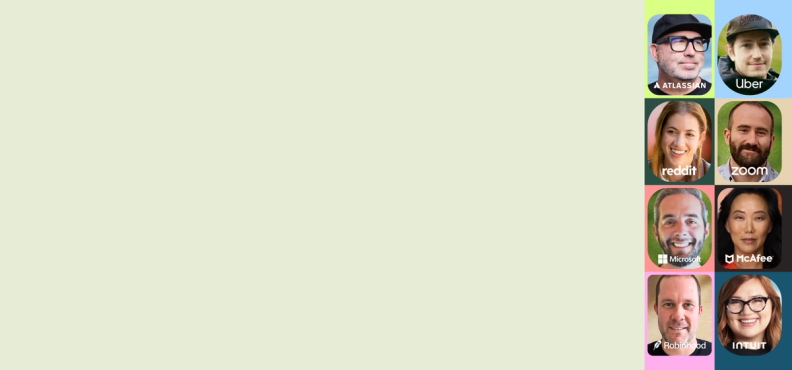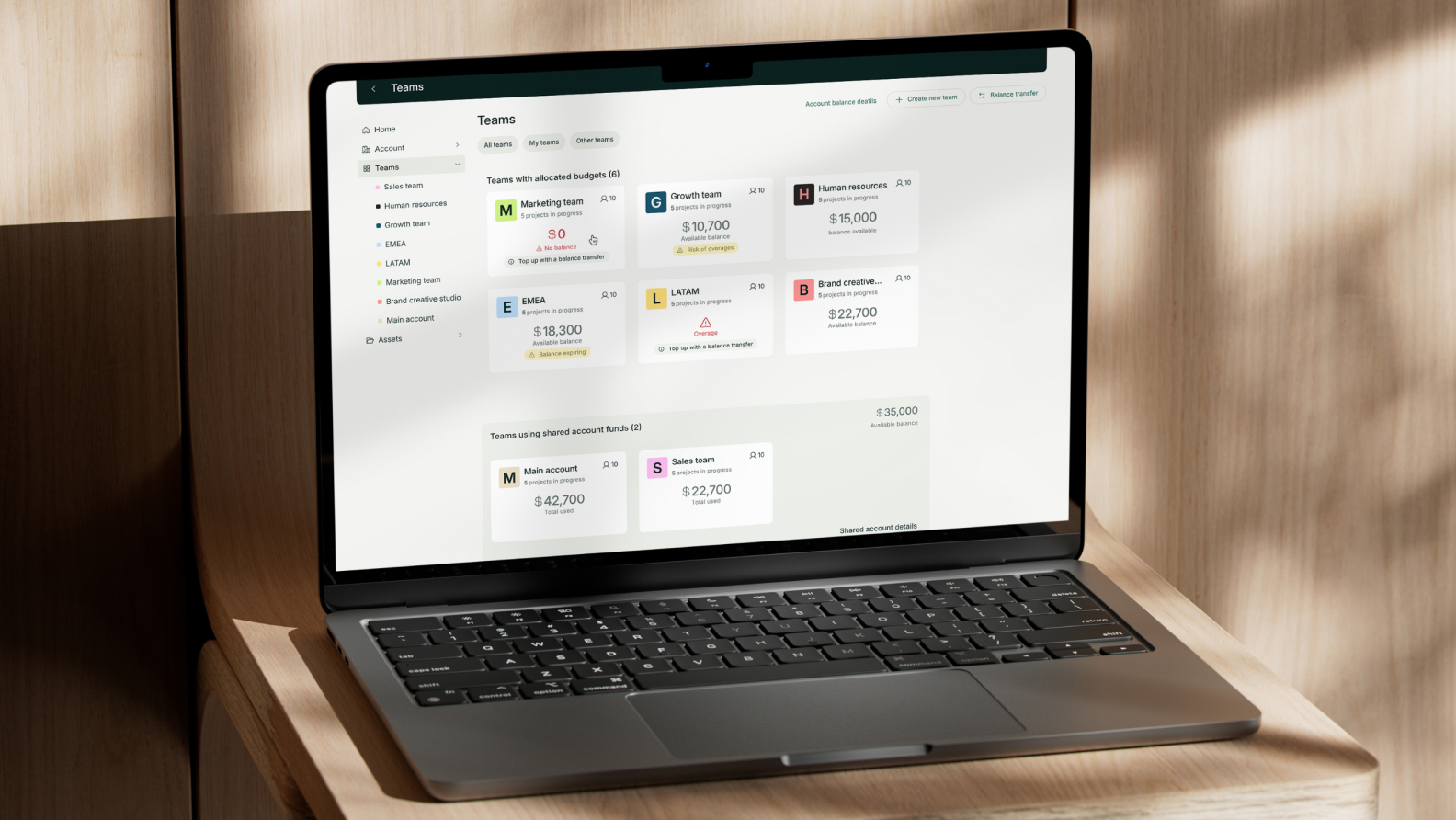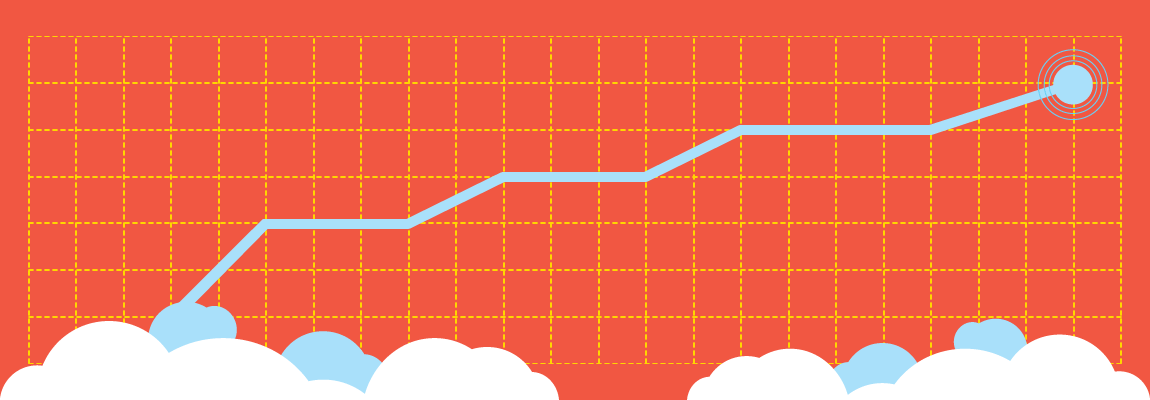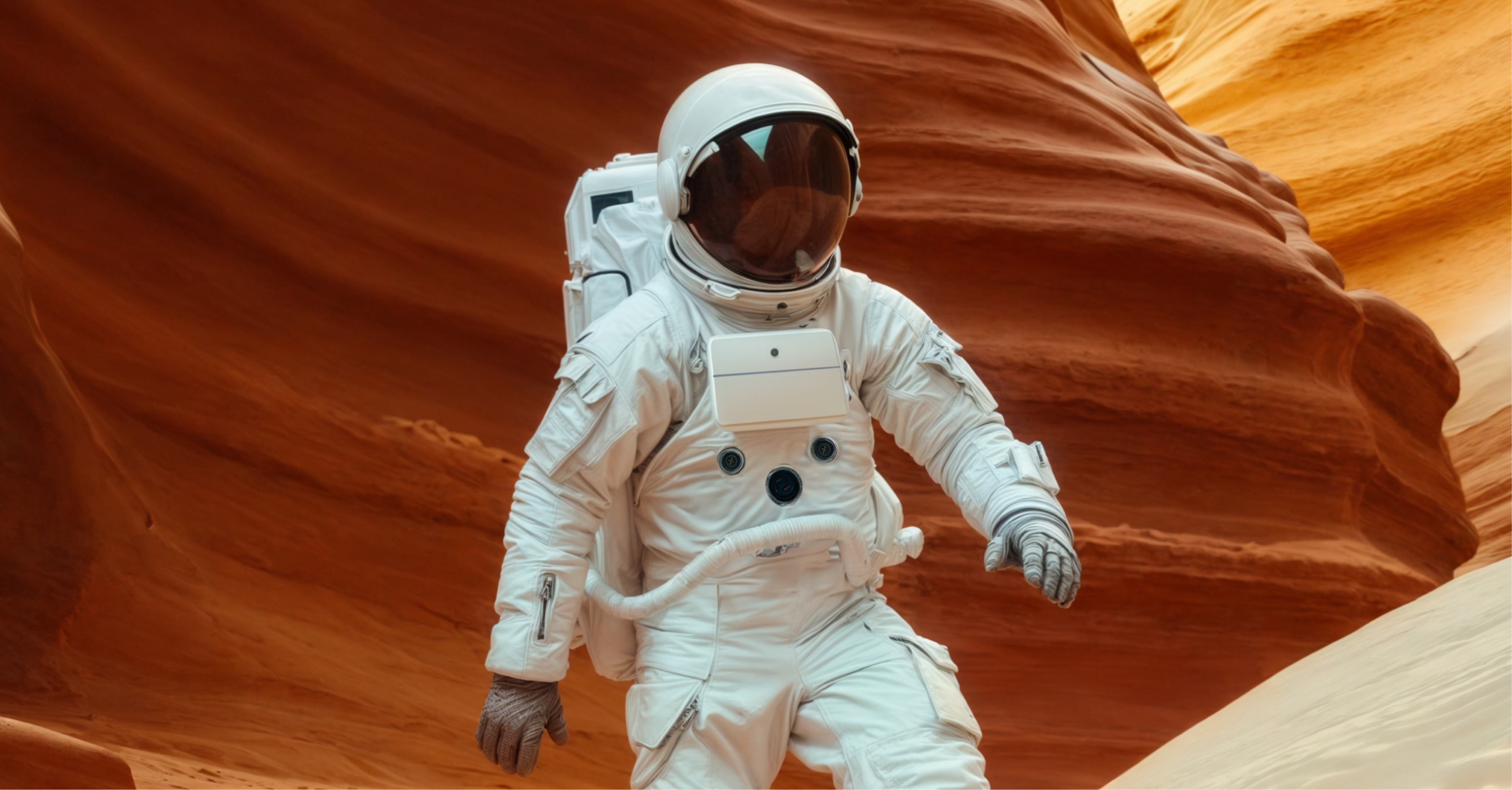
From Uber, Atlassian, and Reddit to Microsoft, McAfee, Zoom, Intuit, and Robinhood, Superside's Crunch Mode summit brought together top creative and marketing minds to share how they stay fast, focused and effective when the pressure’s on.
Crunch periods like Q4 can put even the most prepared teams to the test. Manage it right, and your team can harness that energy to produce amazing work. Manage it wrong, and you could burn out the people who’ve trusted you to guide them through the trenches.
So, how can you guide your team through the crunch to do their creative best?
For Superside's Crunch Mode summit, we brought together some of the most insightful creative and marketing leaders in the world to share their experience and tips on keeping their teams moving forward, even when it feels like you’re working inside a pressure cooker.
Here’s a breakdown of the biggest takeaways from the event—with strategies you can apply to thrive through the busiest seasons of the year.
Keeping it real when the pressure is on
When the stakes are high and the timelines are tight, these two creative leaders know how to deliver.
Josh Higgins, VP & Executive Creative Director at Atlassian, and Viktor Jacobsson, Global Creative Director at Uber, shared how data and testing can give teams confidence without dictating creativity, why setting realistic expectations is key to avoiding burnout, and how AI can speed up production without replacing human taste.
Their bottom line? Trust your people, protect the brand’s core and give innovation room to thrive within clear guardrails. Here's a closer look at their thoughts:
- A clear brief is non-negotiable. Higgins and Jacobsson agreed that a well-developed brief is crucial in a crunch. Higgins said the best way to get alignment is to “...make sure it’s aligned by having everyone involved in writing it.” Without it, you risk stakeholders debating a campaign’s goals mid-project. That’s the fastest route to delays and rework.
- Use data and testing without losing your creative edge. Higgins shared how Atlassian’s Loom campaign benefited from testing at multiple stages, from concept to pre-launch: “It gave us the confidence that the creative was meeting the brief.” Jacobsson noted testing isn’t perfect, but “...it can tell you if you’re heading in the right direction.”
- Protect your timelines. Jacobsson rarely rejects a tight deadline outright, but ensures everyone understands the trade-offs. “I don’t really say no, but I just want to make sure that everyone knows what we can expect. The output versus the time that you have.” He said that managed well, healthy pressure can push teams to perform at their best.
- AI is a tool, not a shortcut. “Options are sometimes your best friend, but sometimes also an obstacle,” Jacobsson said. Without a clear creative vision, AI’s endless possibilities can slow you down. “You need to know your vision and then use these tools to help you get there.”
The conversation wrapped up on the balance between consistency and innovation. It’s a tension every brand faces, but one that becomes sharper when teams are in crunch mode. Jacobsson likened consistency to playing within the lines of a football pitch. There’s room to explore, but you always know where the boundaries are.
Consistency is what turns an isolated campaign into a cohesive brand experience that builds recognition and reinforces trust.
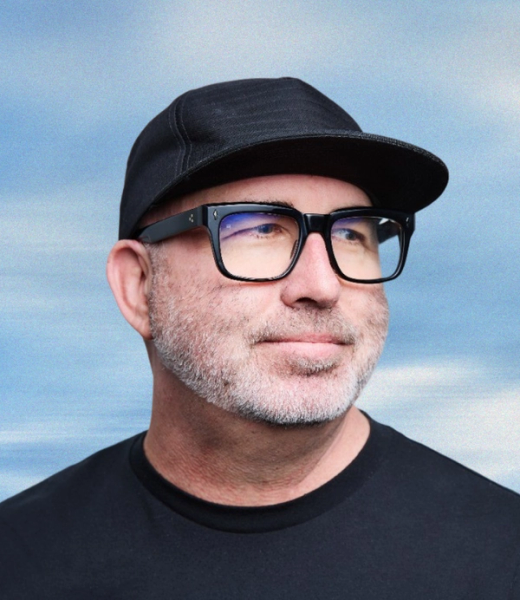
Powering creative workflows with AI agents
How can AI actually help creative workflows?
Superside’s Group Creative Director for Generative AI and AI-Powered R&D, Júlio Aymoré, gave a live demo that answered this key question. In 15 minutes, he showed how multi-agent workflows can scale creative production without sacrificing human taste. “At Superside, we’ve been building workflows that use AI agents in a way that help us work and scale faster and still keep the creativity strong,” he said.
Starting from a single campaign brief, Aymoré’s workflow moved through agents that interpreted the brief, generated brand-style images, swapped clothing for on-brand items, added text and logos, created alternate camera angles, animated stills, stitched video clips together and added music.
Aymoré's advice for building this type of workflow:
- Think of agents as specialist workers. Each has a single task and hands off to the next.
- Start with a strong brief. It’s the guide for every step in the chain.
- Automate repetitive steps. Use agents to automate tasks like clothing swaps, logo placement and clip assembly to free up human creativity.
- Use AI for scale, not style. Keep humans in control of taste, brand integrity, and storytelling.
An AI model is a single tool, like a hammer. An AI agent is more like a worker who knows when to use the hammer, when to grab the screwdriver, and when to call in someone else.
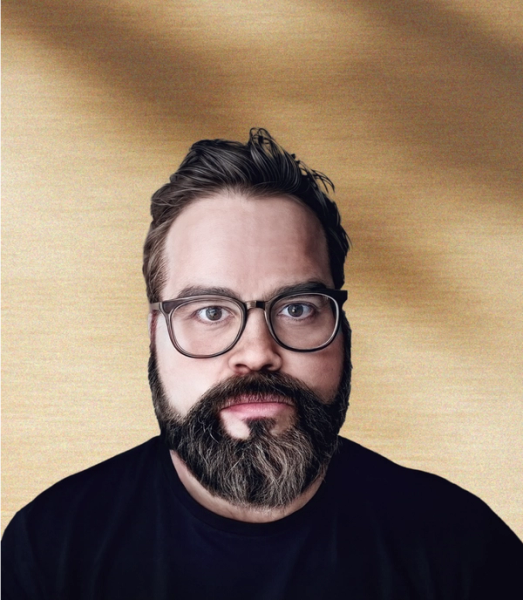
Protecting your people in crunch mode
In high-pressure moments, the difference between healthy urgency and harmful overwork can make or break a team’s creativity, output and well-being.
Rachel Weber Callaway, Global Director, Consumer Product Marketing at Reddit, and Taylor Price, Associate Creative Director at Robinhood, know this all too well. They shared how they recognize the signs of burnout, protect boundaries and keep teams energized for the long game.
It's inevitable, like we're all gonna have these really high pressure moments… but recognition is really important as well.

Both leaders emphasized that making space for downtime, setting clear expectations and building trust with leadership are essential for sustainable performance. Here's a quick recap of their thoughts:
- Stakes over urgency. Not every project requires “110 miles per hour” execution. Align the pace to the actual impact.
- Find the flow zone. Price stressed aiming for the sweet spot between boredom and burnout, “You want to be right in the middle where you’re challenged and you’re being your best self.”
- Ride the wave. Normalize using slow periods for recovery. Weber Callaway reminds teams, “You don’t need to find work if the work doesn’t exist.”
- Read the room. Watch for changes in tone, energy or participation as early signs of burnout. Price suggested, “Reading the room and do a vibe check. You might be able to assess that there’s a dynamic shift.”
- Lead with humanity. Build genuine connections to foster trust and openness. Weber Callaway said, “Bringing that humanity into the day-to-day weirdly helps create the boundaries.”
- Push back with context. When timelines aren’t truly urgent, come back with a bird’s-eye view and proposed solutions. “Here's how we could tackle this urgent thing. But these are the trade-offs if you want it on this date,” Price said. “It can make a compelling reason to push back or to have an extension on those timelines.”
Callaway’s light-hearted advice: Look to your heroes. “This sounds so silly, but what would Taylor Swift do? What would Beyoncé do?”
Speeding up creativity with AI the human way
From tightening timelines to stretching budgets, creative leaders are turning to AI not just to speed up production, but to improve ideas before they ever hit the storyboard.
Helen Lee, Global Director of Brand and Integrated Marketing at McAfee, and Ciaran McCarthy, VP of Brand and Advertising at Microsoft, shared how they’re using AI to accelerate workflows, improve creative alignment and free teams to focus on the work humans do best.
They highlighted:
- Prototype early, cut rework. McCarthy advised replacing “script-only” reviews with visual prototypes: “Let’s not show the script. Let’s show a prototype… You can probably get a lot to people going, ‘Oh, it’s actually not what I wanted,’ or ‘I was thinking more this, this and this.’”
- Taste matters more than ever. Lee emphasized, “The person who’s doing the prompting… has to have excellent taste, and taste becomes so much more important in all of this.”
- Turn chaos into connection. Lee imagined AI tools linking siloed conversations, “It would free me from being in the same meeting like six times… because people just don’t know, and things get really siloed.”
- High-pressure hacks. In crunch time moments, McCarthy uses AI to capture meetings, draft briefs and instantly connect related documents, “We can get from conversation to actual brief in like an hour.”
- Faster campaigns, more impact. Lee’s McAfee team used AI to create 66 ad variants in 11 weeks at 80% of the cost of three live-action ads the year before, “It is a testament to the power of AI, and we had a lot of fun doing it.”
- Push AI beyond logic. McCarthy encouraged creative teams to stretch LLMs, “There isn’t an LLM specifically built for creativity. You’ve got to really prompt and push this thing to its limits to get to something truly creative and not just a generic idea.”
Lee closed with a call to keep the humanity in the equation when you’re working with AI. “Go out and smell the roses. Have delicious food. I think you need to have those experiences to come up with great prompts. Our special sauce is that we are human.”
AI is great, but curiosity or questions plus AI is better.

Working smart when everything's urgent
Tight deadlines don’t have to mean constant chaos.
No really. Dan Schunk, Head of Creative at Zoom, and Ammie Matte, Senior Brand Manager at Intuit, shared frameworks, tools and leadership habits that help teams cut through the noise.
If you only live to work, you will become boring. As interesting as what we do is, you will become boring, and then the work will become boring.
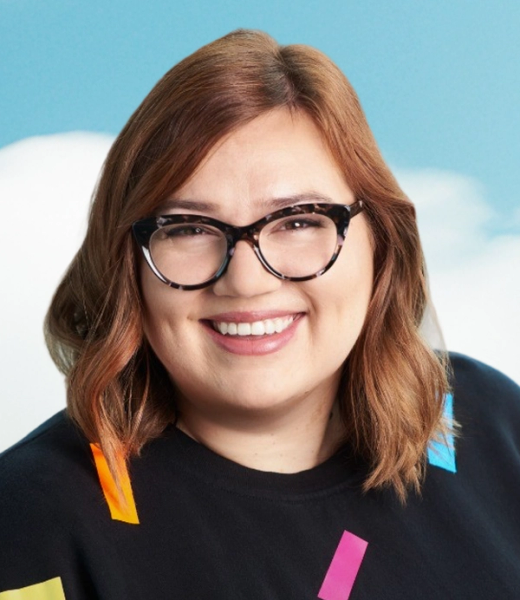
Here's what they emphasized:
- Cut the side quests. Matte uses the term “side quests” for work that doesn’t ladder up to core goals. Eliminating them early keeps teams focused on what matters most.
- Context drives quality. Both leaders stressed giving teams enough context to push back on low-value work. “If something doesn’t align to that north star then it’s not truly a priority,” Schunk said.
- Streamline smartly. Matte noted that not every asset needs to be a creative moonshot. Save the big swings for top-of-funnel moments where impact will be highest.
- Protect the creative brief. Schunk called the brief “the thing that is needed, no matter what.” Even in crunch mode, slowing down to align on audience, message and goals prevents costly rework.
- Build trust and guard time. From clear escalation paths to honest conversations about deadlines, both leaders protect their teams’ ability to do great work. That includes knowing when to shield them from unrealistic timelines and when to jump into the trenches alongside them.
The leaders wrapped things up with a look at AI’s role as a productivity partner. Zoom’s AI Companion and Google’s NotebookLM are helping teams recap meetings, surface information instantly and accelerate execution without losing the human touch.
Crushing crunch time
Across every session, the message was clear: Crunch mode doesn’t have to crush creativity.
In the end, staying focused when everything feels urgent is less about doing it all and more about doing what matters with clarity and care. For more lessons on crushing crunch time, be sure to watch the full summit on-demand.





